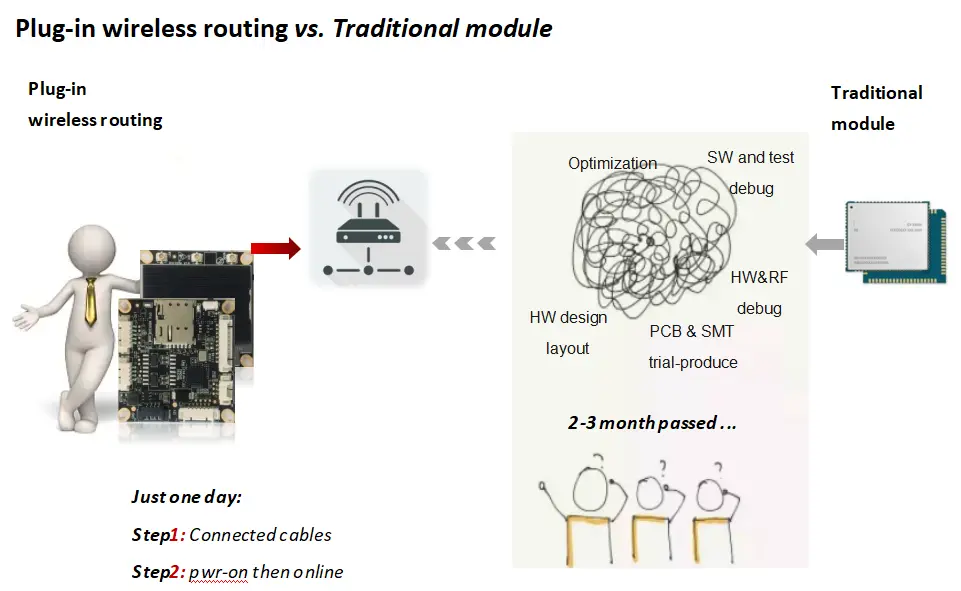2023-08-11
Wi-Fi will soon be quicker. That's wonderful news: faster internet is always in demand, especially as we use our laptops and phones more frequently to consume bandwidth-hungry apps, games, and films. Using faster Wi-Fi routers like Wi-Fi 6 routers will provide people with a better experience.
The Wi-Fi 6 standard, however, offers more than just an increase in speed. It will have a more nuanced effect, and its advantages will probably become more apparent as time goes on.
What is Wi-Fi 6 (802.11ax)?
Wi-Fi 6, also known as 802.11ax, is the most recent generation and wireless networking standard that supersedes the 802.11ac, or Wi-Fi 5, standard. Version numbers ranging from 802.11b to 802.11ac were used to identify Wi-Fi protocols prior to the advent of Wi-Fi 6.

For anything Wi-Fi, Wi-Fi 6 is the most recent specification. According to the stated standard by IEEE, its performance specifics include a variety of required and optional features. As with any new Wi-Fi standard, modulation and signal processing innovations promise a more extensive network experience in high-density settings, making Wi-Fi 6 potentially superior to its predecessors.
Wi-Fi 6 has the potential to operate at 6 GHz and uses the same 2.4 and 5 GHz bands as 802.11a/g/n/ac. When 6 GHz is active, this is new and different, and it is known as Wi-Fi 6E. But everything is still 802.11ax.
Wi-Fi 6 offers the same fundamental functionality as prior standards -- network connectivity via radio technology -- but with potential enhancements in capacity, coverage, and performance. The greatest realization of these advantages occurs in well-designed WLAN environments when Wi-Fi 6 is also supported by client devices. This is crucial to understand since, just like with earlier standards, older clients, interference, and poor design work against Wi-Fi 6. Half-duplex, shared media technology is also a feature of Wi-Fi 6.
Advantages of Wi-Fi 6
Assuming correct deployment and error-free coding by WLAN vendors, Wi-Fi 6 marks a substantial progression in Wi-Fi technology, offering remarkable advantages. While it's tempting to focus on its maximum theoretical data rate of nearly 10 gigabits per second (Gbps) with the utilization of eight spatial streams and 160-megahertz channels, it's important to remember that real-world performance consistently falls short of these theoretical benchmarks.
When executed effectively, Wi-Fi 6 can deliver the subsequent advantages:
Functionality of Wi-Fi 6
Wi-Fi 6 not only amplifies speeds but also introduces enhanced network administration, heightened security, and prolonged device battery longevity. These enhancements are achieved through the incorporation of a range of technological advancements:
These technical enhancements optimize data utilization within the Wi-Fi signal, minimizing wastage. Several of these technologies are also employed in various other wireless communication systems, including 5G.
Thinkwill's Wi-Fi 6 Capabilities
Thinkwill is getting ready to introduce the Plug-in wireless routing module BVE100X, which will support Wi-Fi 6, enabling your devices to harness the various advantages of Wi-Fi 6 mentioned in this blog.
In addition, Thinkwill's routing module BVE100X breaks through the challenges of traditional communication modules, which include high technical barriers, extended secondary design and development debugging cycles, and elevated costs during customer terminal product development. Routing module BVE100X requires just two simple steps to effortlessly achieve connectivity, thereby shortening the development cycle, enhancing production capacity, and reducing overall manufacturing costs by as much as 85% or more.

Routing module BVE100X is capable of catering to a diverse range of AIoT applications, including safety monitoring, unattended operations, shared equipment, tracking and positioning, smart cards, and various scenarios requiring swift wireless data communication deployment.
Are you ready to collaborate with Thinkwill to manufacture the best Wi-Fi routers that support Wi-Fi 6 and other IoT terminal products for wireless data communication? Feel free to reach out to us for further information!
For more information about ThinkWill,
please visit our Website, LinkedIn, YouTube, Facebook, Instagram,
and contact marketing@think-will.com for marketing collaboration
How to Distinguish DTUs, Routers and Industrial IoT Gateways
